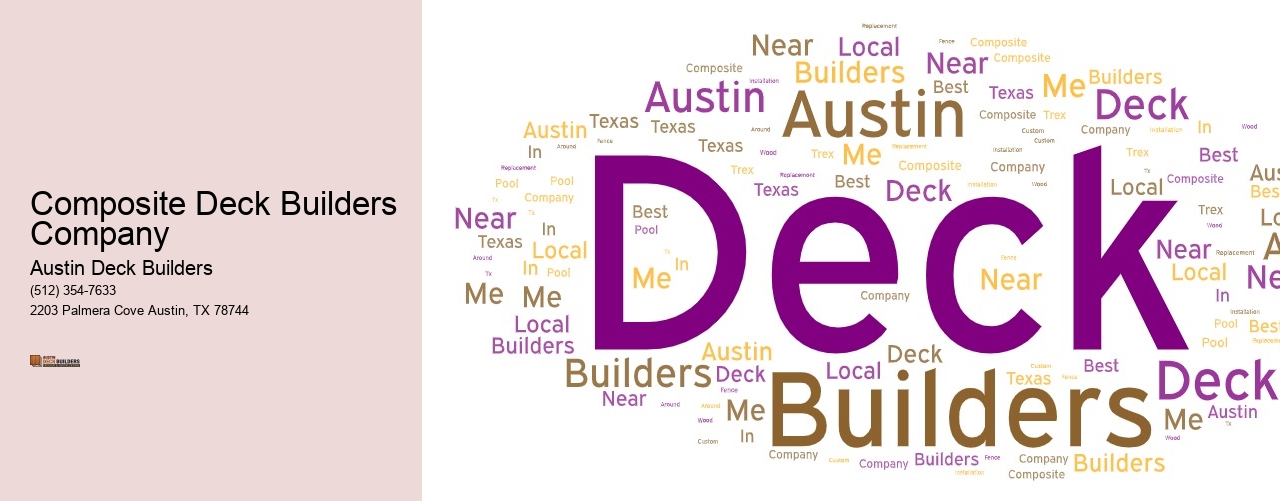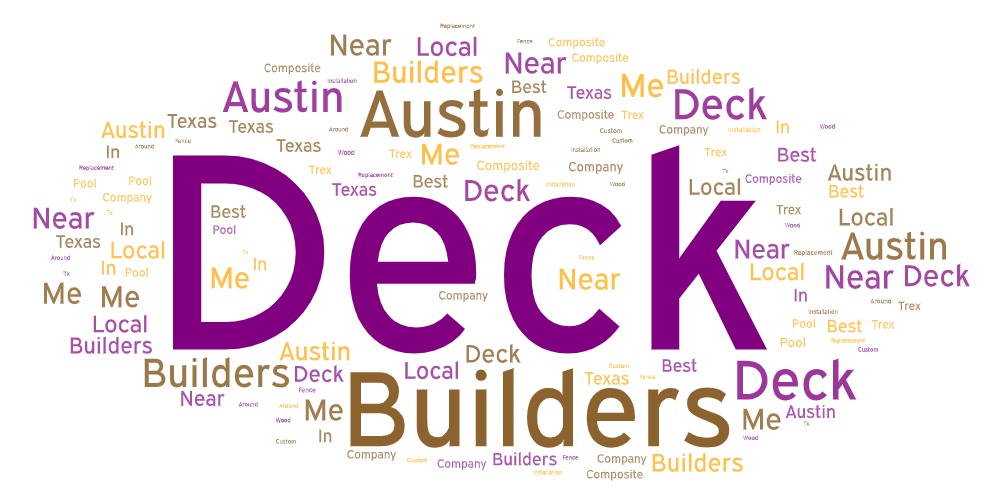

| Entity | Definition |
|---|---|
| Composite Decking | A blend of wood fibers and plastic, offering durability and low maintenance for decks. |
| Pressure-Treated Wood | Wood infused with preservatives to resist rot, insects, and decay for outdoor use. |
| Cedar Decking | A popular natural wood choice known for its beauty, resistance to insects, and weather durability. |
| Trex Decking | A well-known composite decking brand recognized for eco-friendly, long-lasting deck materials. |
| PVC Decking | Decking made from polyvinyl chloride (plastic) that’s fully resistant to moisture and rot. |
Austin Deck Builders – Turning Your Backyards in Austin into Favorite Spaces
A backyard deck should be more than an add-on—it should be the centerpiece of your outdoor lifestyle. At Austin Deck Builders, we specialize in creating decks that become natural extensions of your home. Whether you’re envisioning a quiet corner for relaxation or an expansive entertainment area for hosting friends and family, our team delivers exceptional craftsmanship and tailored design that fits your life.
Each project begins with a thoughtful consultation. We listen closely to your ideas and help shape a design that fits your space, style, and functional goals. From classic wood to modern composite decking, we offer materials that hold up beautifully to Austin’s unpredictable weather while delivering a look you’ll love. Multi-level layouts, built-in seating, custom railings—every detail is planned with precision.
Durability and safety are at the heart of every deck we build. Our expert builders use top-tier materials and best practices to create decks that are not only beautiful but structurally sound. From foundations to finishes, no corners are cut. Whether it’s a small backyard upgrade or a large-scale build, every project receives the same level of care and attention to detail.
We believe in transparency and communication. You’ll always know what to expect in terms of budget, timeline, and process. We work efficiently, cleanly, and with a deep respect for your property—making the experience as seamless as the final result.
Austin Deck Builders has earned a reputation for delivering decks that are as enjoyable to use as they are to look at. With years of experience and a commitment to doing things the right way, we’re proud to be one of Austin’s most trusted deck builders.
If you’re ready to turn your backyard into a favorite gathering place, contact Austin Deck Builders - Design & Installation today.
The evolution of deck building materials is leaning heavily towards eco-friendly options as consumers become more environmentally conscious. Traditional wood decks, although timeless in their aesthetic appeal, have raised concerns over deforestation and sustainability. In response to this, the industry is shifting towards materials such as bamboo, which grows rapidly and offers a strong, durable decking solution with a much lower environmental footprint. Recycled plastic decking is another innovation that repurposes waste into long-lasting decks that resist rot and require minimal maintenance.
Composite decking represents the fusion of nature's beauty with man-made resilience. Combining recycled plastics with wood fibers, composite materials offer an eco-friendly alternative to 100% natural wood decks. These composites are gaining popularity due to their ability to mimic the look and feel of traditional wood without the associated drawbacks such as frequent staining or vulnerability to weather conditions. Furthermore, composites have been hailed for their longevity and low-maintenance properties, making them an ideal choice for homeowners looking for sustainable yet practical decking solutions.
In urban areas where space is at a premium, integrating green roofs with deck building presents an innovative solution that serves multiple purposes. Green roofs involve growing vegetation on rooftops which can improve insulation, reduce heat island effects in cities, and provide residents with additional green spaces. When combined with eco-friendly or composite decking areas for accessibility and leisure use, these installations can transform how urban dwellers interact with their environment—creating rooftop oases that contribute positively to urban ecosystems while offering residents valuable outdoor living space.
Technology continues to play a critical role in the advancement of deck building materials. Manufacturers are now employing cutting-edge techniques to ensure their products are not only environmentally friendly but also exceptionally durable and resistant to elements like UV radiation and moisture. Innovations such as capped composite decking—that wraps the composite core with a protective shell—are pushing the boundaries of what's possible; providing homeowners with decks that maintain their appearance and integrity for decades while still upholding ecological values crucial for future sustainability efforts in construction.
Before any construction begins, careful planning is essential to ensure a successful deck installation. Start by deciding on the size, design, and location of your new deck. Consider how it will tie into your existing roof structure if it's an elevated deck or rooftop deck. Choose materials that are suitable for your climate and intended use. Pressure-treated wood, composite materials, or hardwoods can all be good choices depending on your preferences and budget. Once you've settled on the specifics, draw up a detailed plan or blueprint of the deck layout including precise measurements and obtain any necessary building permits from your local municipality.
The next step involves preparing the site where the deck will be installed. This usually means clearing away any debris or obstacles like stones, plants, or old structures that might interfere with construction. If installing a rooftop deck, ensure that the roof is structurally sound to support the additional weight; consult a structural engineer if necessary. For ground-level decks, you may need to level the surface and lay down a weed barrier cloth to prevent unwanted plant growth under your deck.
With preparations complete, you can begin constructing the framework of your new deck. This starts with setting concrete footings which will provide a stable base for the deck posts if required by your design. Next, install post anchors and posts that will hold up beams supporting your decking boards. Attach ledger boards securely to your house if applicable for an attached deck design—this step is crucial as incorrect ledger attachment can lead to serious structural failures.
After establishing a robust framework, proceed with laying down decking boards across the beams using either screws or hidden fasteners for a cleaner look—make sure they're evenly spaced for both aesthetic appeal and functionality; this includes allowing space for expansion in warmer climates. Once all boards are securely in place, install any railings or stairs according to safety regulations. Finish off by applying sealants or stains as necessary to protect against weather damage and prolonging life span of materials used in construction process before adding furniture or planters as per personal preference transforming newly built structure into perfect outdoor living space atop roof environment.

It includes site prep, permits, foundation/footings, framing, decking installation, railings, custom features, and final inspection.
If your deck has extensive structural damage, outdated design, or persistent maintenance issues, a remodel may be more cost-effective than repeated repairs.
Most offer free estimates and initial consultations to assess your property, discuss options, and provide quotes.
Costs range from $25-$60+ per square foot, depending on materials, size, features, and labor. Composite decks cost more upfront but save on maintenance.
Typical projects take 1-3 weeks, depending on complexity, weather, permitting, and contractor schedule.